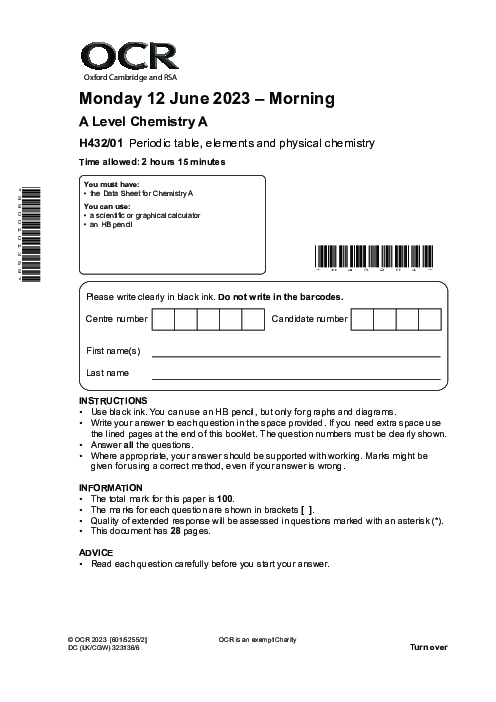Chemistry (A) H432/01 June 2023
omer uner
1. Energetics and thermochemistry: Born-Haber cycles, lattice enthalpy of BaI₂, enthalpy of combustion (heptane, nonane, ethene), entropy and Gibbs free energy calculations, feasibility conditions
2. Kinetics and equilibrium: rate equations from experimental data (Br⁻/BrO₃⁻/H⁺), colorimetric analysis of Co²⁺ equilibrium, Kₚ calculation for NO₂/N₂O₄, equilibrium shifts with temperature and pressure
3. Acid–base and buffer systems: Kw at different temperatures, pH calculations (Sr(OH)₂, water), buffer capacity and Ka determination, titrations involving weak acids and excess bases, strong vs weak acid reactivity
4. Redox reactions and electrode potentials: MnO₄⁻ titration with Fe²⁺, redox systems with Zn, Fe, Mn, Cr₂O₇²⁻ and VO₂⁺, oxidation state changes in lithium-ion cells, disproportionation of ClO⁻, precipitation and ligand substitution in Cu²⁺/Cr³⁺ complexes
5. Transition elements and complex ions: electron configuration of d-block elements, difference between d-block and true transition elements, complex ion structure, coordination number, optical and cis–trans isomerism
6. Physical chemistry fundamentals: gas laws (molar mass of nitrogen oxide A), entropy trends in reactions (ethanol → ethene + H₂O), ionisation energy comparisons across Period 3 and Group 2, intermolecular forces and molecular polarity in solids and gases
See More Paper 1 6 months ago
Chemistry A (H432) Subject directory
All resources in one place
Related Past Papers
Related Tutorials
Crash report

